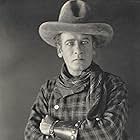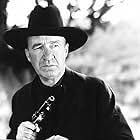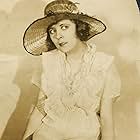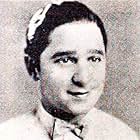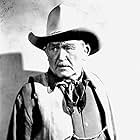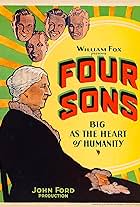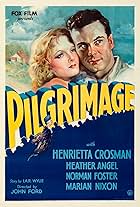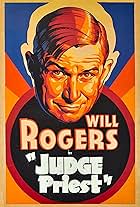IMDb RATING
7.5/10
1.6K
YOUR RATING
Three outlaws come to the aid of a young girl after her father is killed.Three outlaws come to the aid of a young girl after her father is killed.Three outlaws come to the aid of a young girl after her father is killed.
George Harris
- Joe Minsk
- (as Georgie Harris)
Alec B. Francis
- Rev. Benson
- (as Alec Francis)
Grace Gordon
- Millie's Pal
- (uncredited)
George Irving
- Gen. Neville
- (uncredited)
Bud Osborne
- Hunter's Henchman
- (uncredited)
Vester Pegg
- Henchman Shooting Lucas
- (uncredited)
Walter Perry
- Pat Monahan
- (uncredited)
Eleanore Vogel
- Woman
- (uncredited)
Storyline
Did you know
- TriviaAssuming its copyright has not lapsed already, this film and all others produced in 1926 enter the U.S. public domain in 2022.
- GoofsDuring the bathing sequence, the tent appears to be normal size from the outside, but it is several times as big in the interior shots.
- Quotes
[title card]
Title Card: Mike Costigan and 'Spade' Allen weren't exactly thieves - but they had a habit of finding horses that nobody had lost
- Alternate versionsThe version shown on the American Movie Classics channel had an uncredited piano score. It was provided by 20th Century-Fox and ran 92 minutes.
- ConnectionsFeatured in Directed by John Ford (1971)
- SoundtracksCarry Me Back to Old Virginny
(uncredited)
Traditional Southern ballad (1840s) rewritten by James Alan Bland (1878)
Integrated into restoration score as a theme for Lee's father.
Featured review
It seems John Ford made his best films when a great story happened to coincide with his own sensibilities. For a director who filmed masculine camaraderie with more tenderness than male-female romance, and almost gave more weight to the comic asides than the actual plot, 3 Bad Men seems tailor-made a Western in which the eponymous outlaws are the heroes, and the love story between Olive Borden and the more typically heroic George O'Brien becomes a subplot.
Ford's tendency to improvise gags, and expand comic relief to entire scenes is often a bit excessive, but in 3 Bad Men it does not matter so much because the comedy characters are protagonists rather than supporting players threatening to steal the show. In fact the laughs we have had throughout the film make the poignant finale really pay off. You get a similar effect in Charlie Chaplin's features. What's more, Tom Santschi, J. Farrell MacDonald and Frank Campeau, big ugly supporting players that they were, were nevertheless great actors who here prove themselves fully capable of emotional depth.
Ford, meanwhile, can be seen gradually developing into a confident craftsman, especially as regards his shot composition. While his earliest pictures featured framing that was pretty yet distracting, he now achieves the same aesthetics with far more subtlety. A major difference is that whereas before the framing devices were "fixed" items for example a tree or a canopy he now achieves a more natural look a figure leaning against a post in the foreground here, the end of a wagon there. He still occasionally makes use of the old-fashioned "heavier" framing, but only to highlight a key moment, for example enclosing Olive Borden and Tom Santschi between two cavern walls towards the end.
This is of course also an epic pioneer Western and, although the historical context is not paramount as it is in The Iron Horse, Ford constantly reminds us that a civilization is being built in the background literally. As in many of his pictures, he balances the story of individuals with the story of masses, often in the same frame, so a dialogue scene might take place with a few horses or wagons trailing past in the distance always done with so much control so as not to let the one outbalance the other. Perhaps the best example is in an emotional little vignette at the end of the land rush scene a wagon fills most of the screen, but Ford allows a tiny gap on the left to show the settlers carrying on in the background just keeping that part of the story going without allowing it to dominate.
By the way, the new Dana Kaproff score that accompanies the recent "Ford at Fox" restoration of 3 Bad Men is also very good. This is as far as I can tell the only silent score Kaproff (normally a TV composer) has done, but he handles the form with skill. It's full of little touches that I like for example, about twenty minutes in there is a brief scene of George O'Brien's character carrying on his way, singing his song, silhouetted against the sun. Kaproff, rather than giving us the same tune, uses a minor key variation. We recognise it as O'Malley's signature tune, but it just has that little difference that stops it becoming samey, while at the same time corresponding to the sombre tone of the shot.
3 Bad Men is probably Ford's best silent picture. Here at last he has been given a story in which the silhouettes of men on horseback riding across the plains can be tinged with both excitement and poignancy. That was where romance truly lay for old Jack Ford.
Ford's tendency to improvise gags, and expand comic relief to entire scenes is often a bit excessive, but in 3 Bad Men it does not matter so much because the comedy characters are protagonists rather than supporting players threatening to steal the show. In fact the laughs we have had throughout the film make the poignant finale really pay off. You get a similar effect in Charlie Chaplin's features. What's more, Tom Santschi, J. Farrell MacDonald and Frank Campeau, big ugly supporting players that they were, were nevertheless great actors who here prove themselves fully capable of emotional depth.
Ford, meanwhile, can be seen gradually developing into a confident craftsman, especially as regards his shot composition. While his earliest pictures featured framing that was pretty yet distracting, he now achieves the same aesthetics with far more subtlety. A major difference is that whereas before the framing devices were "fixed" items for example a tree or a canopy he now achieves a more natural look a figure leaning against a post in the foreground here, the end of a wagon there. He still occasionally makes use of the old-fashioned "heavier" framing, but only to highlight a key moment, for example enclosing Olive Borden and Tom Santschi between two cavern walls towards the end.
This is of course also an epic pioneer Western and, although the historical context is not paramount as it is in The Iron Horse, Ford constantly reminds us that a civilization is being built in the background literally. As in many of his pictures, he balances the story of individuals with the story of masses, often in the same frame, so a dialogue scene might take place with a few horses or wagons trailing past in the distance always done with so much control so as not to let the one outbalance the other. Perhaps the best example is in an emotional little vignette at the end of the land rush scene a wagon fills most of the screen, but Ford allows a tiny gap on the left to show the settlers carrying on in the background just keeping that part of the story going without allowing it to dominate.
By the way, the new Dana Kaproff score that accompanies the recent "Ford at Fox" restoration of 3 Bad Men is also very good. This is as far as I can tell the only silent score Kaproff (normally a TV composer) has done, but he handles the form with skill. It's full of little touches that I like for example, about twenty minutes in there is a brief scene of George O'Brien's character carrying on his way, singing his song, silhouetted against the sun. Kaproff, rather than giving us the same tune, uses a minor key variation. We recognise it as O'Malley's signature tune, but it just has that little difference that stops it becoming samey, while at the same time corresponding to the sombre tone of the shot.
3 Bad Men is probably Ford's best silent picture. Here at last he has been given a story in which the silhouettes of men on horseback riding across the plains can be tinged with both excitement and poignancy. That was where romance truly lay for old Jack Ford.
Details
- Runtime2 hours 2 minutes
- Sound mix
- Aspect ratio
- 1.33 : 1
Contribute to this page
Suggest an edit or add missing content













